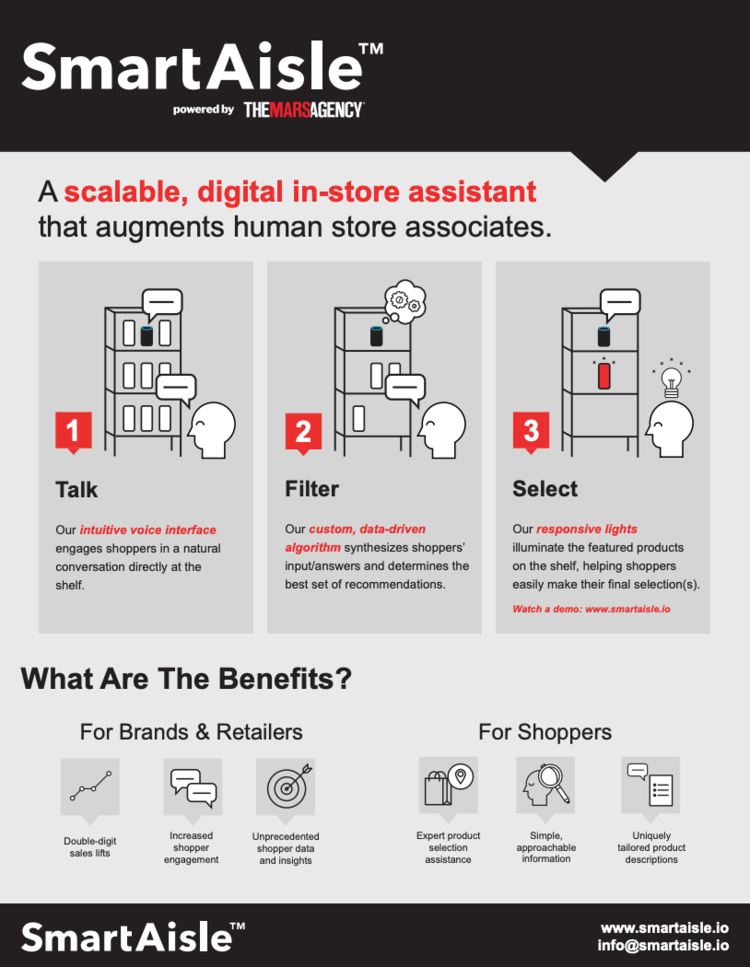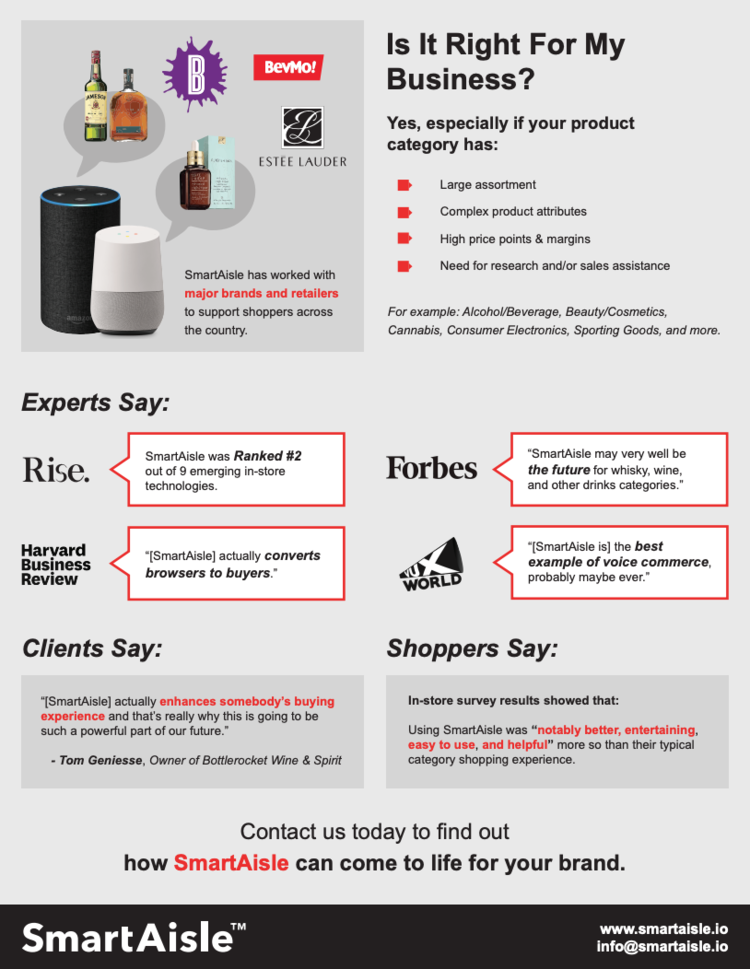SmartAisle
Design Internship, Voice UI Product Selection Tool
As a Design Intern at SmartAisle, I worked as a team of one to quickly deliver compelling graphic designs for client-facing materials. Over the course of a summer, I worked on impactful selling materials such as sell sheets and sales decks, and was involved in introductory stages of new category research. I earned great experience working both on a small startup team and within a large corporate company, learned invaluable skills related to presenting designs and asking for feedback, working with a diverse team, and became a more confident designer.
Tools Used: Adobe Illustrator, Adobe Xd, Google Slides
About SmartAisle
SmartAisle is a scalable, digital in-store assistant that augments human store associates, and provides shoppers with expert product selection guidance, information, and education at the shelf. We like to call it the world’s first talking shelf. When I joined the team, we were working on expanding the business and gaining new clients, especially across the alcohol/beverage and cosmetics categories. A big part of my job when I first began working there was becoming familiar with the SmartAisle brand identity. This went far beyond adhering to predetermined branding colors, type, and iconography. I worked hard to learn our brand story so that I could deliver design content that was consistent with our brand and write good copy.
Design Process
Research! — Before I began a project (whether it was a sell sheet, sales deck, or website), I spent time researching the best version of it. By finding and evaluating the best (and sometimes worst) instances of the deliverables I was challenged to produce, I learned which strengths to follow and which weaknesses to avoid.
Sketching — Each design deliverable was sketched many times on paper before making it on screen. This was a great way for me to visualize and evaluate my long lists of ideas.
Storytelling — Every deliverable I made had to tell a story about the product and our values. Getting to know the team and our mission played a big role, but becoming invested in the potential user benefits and user story was paramount.
Feedback — Working on such a small team made it especially easy to get feedback. While this was at first a challenge for me (note to self: never ask someone, “what do you think of this?“) I learned how to give design options for reviewers to choose between and how to ask for specific feedback.
Wireframes/Layout — Bringing content to life on screen was rewarding and helps with the transition from layout and content to copy and message.
Challenges
As an intern team-of-one, the challenges I faced at SmartAisle forced me to dig deep for solutions and ask a lot of questions. My perceived amateur skill base, along with the high-stakes attitude held by everyone in the office, made me question my authority and expertise as a designer.
At first, I instinctually looked to my team for approval, but this didn’t help me improve. It was frustrating to leave feedback sessions with mixed, often conflicting opinions about my work. It was hard to boil down each person’s input into one or a few common goals.
As the summer progressed, so did I. Taking more initiative at work and ownership of my design choices helped me effectively filter and evaluate feedback. Furthermore, it helped me become more integrated on our team of hard-working and innovative leaders. When I presented my work with confidence and grace, my coworkers felt more inclined to trust me, challenge me, and consult me for projects outside of my internship portfolio.
Lessons Learned
Asking for Feedback — I thought the easiest way to get the most amount of feedback on a design was to say, “What do you think?” I was wrong. While this technique does provide a loathsome amount of feedback, it can be mixed, unproductive, and overwhelming. Instead, I learned to approach my team with options. Showing someone a few iterations of a design with specific questions helped me:
Decide which elements were important to ask about.
Accept more specific, directional feedback.
Identify weaknesses and strengths in my work.
Become a more confident designer.
Áine Dillane © 2024

